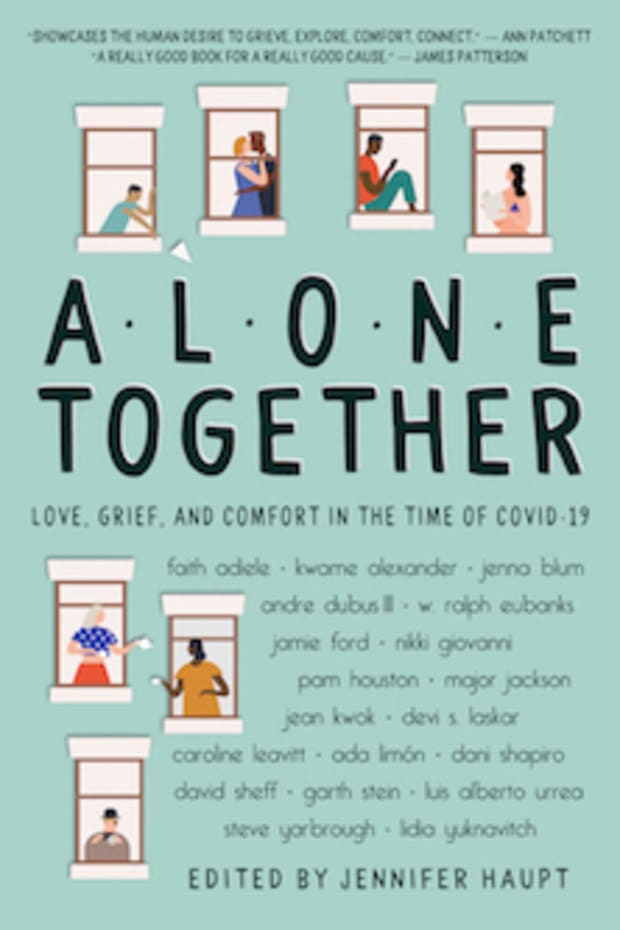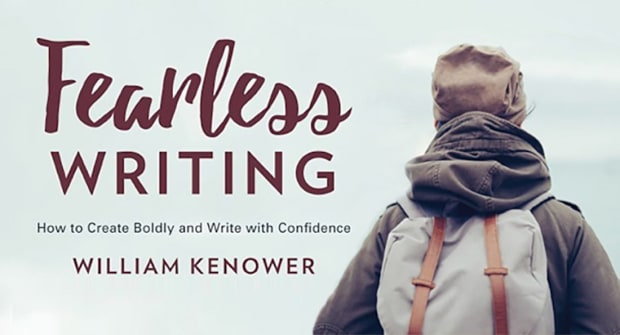When I started my journey as a freelance writer over six years ago, my head was filled with the same visions that nearly everybody has.
I pictured myself in the corner table of my favorite coffee shop, my fingers flying over the keyboard as I cranked out stories I was passionate about. I assumed I’d land glossy magazines, big-name publications and regular columns. Very Carrie Bradshaw-esque, right?
But after a few months of fruitless pitching, I was frustrated. I had received rejection after rejection—or even worse, radio silence. I was at a standstill and royally confused about how anybody managed to hack a career as a writer.
Just as I was about to wave my white flag from the fetal position under my desk, I stumbled upon a job posting looking for a freelance writer to produce weekly blog posts about storage unit insurance. Yes, you read that correctly: storage unit insurance.
I was desperate, so I tossed my hat into the ring. And you know what? I landed that gig.
It was then I had an important realization: Maybe all of these writers I was shamelessly envying on social media weren’t actually making their living with tried and true journalism. Perhaps a good chunk of their income was coming from content marketing.
Let’s back up…what is content marketing?
Imagine you need to purchase something—for simplicity’s sake, let’s say you’re starting your search for a new pair of running shoes.
You want to make a smart decision, so you start with some research. You type “how to find the best-fitting running shoes” into Google, and you find an article that provides all sorts of helpful sizing tips.
When you get to the bottom, you notice that the post you’re reading was actually published by a shoe company. You click through their inventory and end up purchasing a new pair from them.
That’s a very simple example, but it’s content marketing in action. Content marketing involves creating informative and valuable online materials (think things like blog posts, podcasts, infographics, videos and more) to get new customers engaged with a business or brand (or into the “funnel,” as we say in the biz).
When done well, content marketing:
- Starts relationships with new customers
- Increases brand awareness and loyalty
- Establishes and solidifies trust
Like I mentioned above, there’s a ton of resources and assets that can fall under the “content” umbrella. But, in this post, we’re going to focus specifically on written content—like blog posts, ebooks, case studies, whitepapers and more.
How does content marketing differ from journalism?
I have good news for you: If you consider yourself a tried and true reporter or journalist, you’re absolutely capable of moving over into content marketing.
Good writing is good writing, and a lot of the fundamentals you’ve picked up in your journalism career will still apply to content marketing. You need to be able to string sentences together in a coherent and engaging way.
However, content marketing does have some notable differences you should be aware of—which I’ve lovingly coined “the three p’s”:
- Purpose: Journalism aims to educate people about a certain topic, and that’s generally true for content marketing as well. However, since the content you’re creating is tied to marketing goals (and ultimately, sales), there will be a more specific purpose you’re aiming for—such as getting newsletter signups, boosting free trials, increasing sales and more.
- People: In most cases, your journalism audience is pretty broad. When you’re covering a topic, your audience could be anyone who’s interested in that subject. In contrast, content marketing usually involves writing with a very specific audience in mind. For my writing assignments, the target audience has been as narrow as, “A team manager at a mid-sized marketing agency who’s actively seeking a new project management tool.”
- Process: The process of writing a piece varies from publication to publication. Some outlets allow journalists to run with a story with little supervision, while others take a more collaborative approach where editors work closely with journalists to shape the piece. But it’s not often that journalists are given a true creative brief to complete the assignment. That’s much more the norm in content marketing, where the client will share things like keyword research, linking requirements, word count expectations and more details with the writer upfront.
Is there money to be made in content marketing?
Absolutely. That’s my short answer, but let’s expand on it a little bit.
All of the horror stories of publications slashing budgets, laying off staff or even shutting their doors completely are enough to have you shaking in your boots.
It’s true that journalism has struggled in recent years. Pew Research Center found that U.S. newspapers have eliminated half of their newsroom employees since 2008. Statista states that the estimated aggregate revenue of U.S. periodical publishers was $46 billion in 2007. By 2017, it had shrunk dramatically to $28 billion.
While it seems like things are heading in the wrong direction for journalists, there are still numerous writers who manage to build thriving careers in journalism. I promise they’re out there. However, I’d venture to guess that many others have started to move over to content marketing—or at the very least, they’ve dipped a toe in.
It’s a rapidly growing career field, and research from HubSpot found that the companies they surveyed spent 46% of their budget on content creation. As journalism gigs continue to be harder and harder to come by (especially for newbies), content marketing is ripe with opportunity.
But what about the money? Much like any other career, how much you can expect to earn will depend on your experience, niche and a dozen other factors.
PayScale claims that the median salary of a content writer (one working in-house for a single employer) is around $49,000.
I think most freelance content writers earn significantly more than that. Personally, I’ve cracked the six-figure-milestone twice as a freelance writer who’s focused primarily on content marketing—and I’m on track to do so again this year.
4 tips to transition to a content marketing career
If you’ve been banging your head against your keyboard and growing increasingly frustrated with the seeming lack of journalism opportunities, content marketing might be the open door you’ve been wishing for.
Like I mentioned before, good writing is good writing and making the transition to focus more on content marketing isn’t as drastic of a leap as your inner critic would have you believe.
With that said, there are a few nuances you’ll need to be aware of. Here are four tips to keep in mind as you change gears.
1. Understand the difference between a strategist and a writer
Before you start relentlessly pursuing new freelance gigs, it’s important to make the distinction between a content strategist and a content writer.
A content strategist is going to do a lot of the behind-the-scenes work. They’ll develop audience personas, dig into keyword research, hash out a content strategy and calendar, and then assign pieces out to writers. They might do some writing work too, but the bulk of their time and energy is dedicated to, well, strategizing.
The writer is focused on—you guessed it—writing. This is the capacity I typically work in. By the time a project gets to me, the client (whether it’s their managing editor, marketing department or a freelance strategist they’re working with) has already laid that groundwork. I use that information to craft my piece, but I’m not the one actually finding it. Make sense?
2. Find your niche
So many freelancers bristle up at the idea of zoning in on a niche. I get it—they’re concerned that they’re going to rule out prospective clients and projects. Shouldn’t they be open to all opportunities?
Not necessarily. In fact, I credit defining my niche with skyrocketing my career as a freelance writer. When I refined my focus, my client base and income actually increased. It’s counterintuitive, but true. That’s because finding a niche offers the following advantages:
- It focuses your efforts: Rather than chasing down any opportunity under the sun, you can spend your time finding gigs and projects that are a good fit for you and your expertise.
- It establishes credibility: You’re one person, and you can’t know something about everything. By choosing a niche, you can build your knowledge about the specific topics you want to write about. Plus, the more you write about a certain industry or subject, the more you’ll establish yourself as an expert in your field.
- It builds name recognition: A good chunk of my existing clients have come organically. They see something I published for another client and want to work with me in a similar capacity. Things wouldn’t work that way if I was writing about everything from healthcare to ecommerce, as my reputation would be too broad.
If you’re struggling to identify your own niche, I recommend following this thought process:
- What topics or industries are you interested in writing about?
- What topics do you have unique expertise in?
- What overlap exists between your answers to the above two questions?
Wherever there’s overlap, that’s a potential niche for you. See? It’s not so tough after all.
3. Ask the right questions
In order to do content marketing right, you’ll need to get your hands on some important information. Clients who have refined content marketing processes up and running will likely provide this for you in a creative brief.
But, if not, take the initiative to ask for the details you need to write an effective piece. Here are some nuts and bolts questions to ask:
- What audience are we speaking to?
- Are we targeting a keyword for this piece? Which one?
- What’s the goal for this piece? How are we measuring success?
- Are we aiming for a specific word count?
- Is there a specific call to action (CTA) you’d like me to include?
- Are there any internal resources you’d like me to link to?
Depending on the complexity of their content strategy, there’s far more you could dig into. However, those are enough to get you started on the right track.
4. Refine your style
There’s a wide assortment of journalistic styles, but most are primarily focused on compelling storytelling.
The best content marketing weaves that in too (it’s not as easy as it sounds), but online marketing content has the added challenge of appealing to search engines and holding the attention of unfocused internet surfers.
That means it has some notable features in terms of format and style, including:
- Short sentences and paragraphs
- Headers and subheads to break up text
- Bullet points to present concepts in a digestible way
Basically, the more skimmable your content is, the more suitable it is for online consumption. That can be a challenging switch to make, depending on the writing style you used for previous journalism assignments.
I know it’s heart-wrenching to think that people won’t read every single one of your carefully-crafted words. But, it’s the reality of today’s rapid-scrolling world. A whopping 81% of people skim online content, rather than read it in its entirety.
Want to expand your writing career? Say ‘hello’ to content marketing
Today, I’d say about 95% of my freelance writing work is related to content marketing. I still do the occasional reported piece for a print or online publication, but the bulk of my recurring work (and as a result, my income) comes from content marketing.
In all honesty, the lines between journalism and content marketing are already a little blurry—and they’re only going to become blurrier.
But, that’s a good thing. It means making the switch to content marketing from other forms of writing isn’t that big of a leap.
So, if you’re tired of dealing with inbox crickets and wondering whether all of the writing gigs have dried up and disappeared, try your hand at content marketing. You might be surprised by the way it elevates your writing career.
Photo via Dean Drobot / Shutterstock
The post Finally, All the Answers You Need About What Content Marketing Is (And How to Do It) appeared first on The Write Life.



